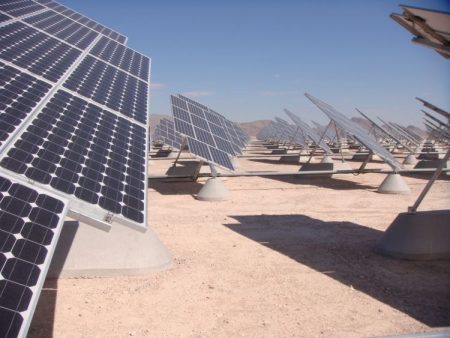January 17, 2018 – It is turning into a no contest between legacy fossil-fuel power generation and renewable energy from wind, solar photovoltaic, and solar thermal according to the latest report issued by IRENA, the International Renewable Energy Agency. The IRENA report looks at two sources of data to calculate where pricing is going. The data includes:
- assessing 15,000 data points from energy projects across the globe representing more than 1,000 Gigawatts of capacity.
- analyzing an auctions database of more than 7,000 projects representing another 300 Gigawatts of capacity.
What does the data show?
- the cost to produce renewable energy from solar photovoltaic panels has seen an overall decline of 80% since 2009.
- wind turbine prices have fallen by 40% in the same time period.
- investment costs per Gigawatt hour produced by onshore wind projects have dropped by 9% in the same time period as the cost of the electricity produced has gotten 15% cheaper.
- utility costs for solar photovoltaic panels have dropped by 80% since 2010.
- residential costs for solar photovoltaic panels is 67% cheaper since 2010.
The IRENA report was tabled this week at the World Future Energy Summit in Abu Dhabi.
Its most startling prediction states that by 2020 “all forms of renewable electricity will be consistently cheaper than power produced by burning fossil fuels.”
Here’s the data from today that makes that prediction appear accurate.
- fossil-fuel power generation costs vary between $0.05 to $0.17 per kilowatt hour (kwh) today.
- hydroelectric renewable energy’s weighted average is $0.05 per kwh.
- onshore wind is $0.06 per kwh.
- bioenergy and geothermal is $0.07 per kwh.
- solar photovoltaics is $0.10 per kwh.
- solar thermal is $0.06 per kwh.
Of course, the challenge that wind and solar renewable energy face remains intermittency. But storage technology innovation is bridging that gap. Consider the recent announcement about the building of a thermal solar power plant in South Australia that will use a combination of paneled mirrors and molten salt, as well as the Tesla-built battery that is backing up a wind farm in that state, both facilities capable of providing continuous 24×7 power.
IRENA has provided a roadmap for the decarbonization of energy generation that states renewable power will have to grow to 65% of the global energy supply by 2050 compared to today’s 15% to keep the mean temperature of the planet from hitting the 2 Celsius (3.6 Fahrenheit) rise discussed in the Paris COP21 Agreement. IRENA data shows that 67% of current greenhouse gas emissions come from producing energy. Take fossil-fuel power generation out of the equation and temperatures can be kept closer to only a 1.5 Celsius (2.4 Fahrenheit) rise.
The difference between the two may seem small but according to climate scientists, the impact on the planet going from 1.5 to 2.0 Celsius will be enormous and something we need to avoid at all costs.
More disconcerting is the lack of cogent plans, to decarbonize and move away from fossil-fuel generated power, by one-third of the countries that signed the Paris Climate Change agreement.








